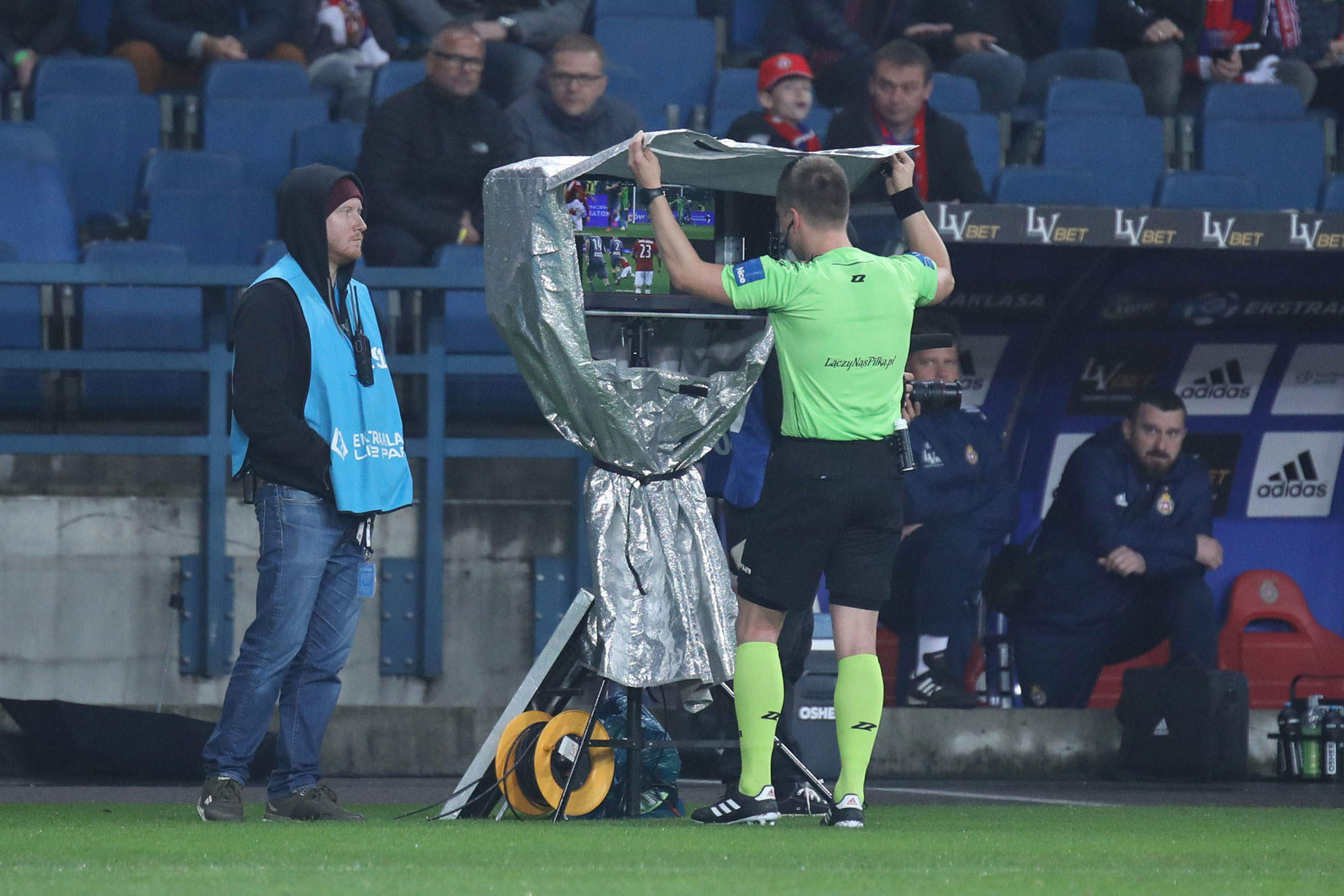
Football euphoria reached the stars in Moscow on Thursday as the 2018 World Cup finally kicked off. While host Russia opened the tournament with five goals against Saudi Arabia, the most awaited protagonist, the World Cup VAR, has debuted in the competition, starting a new era in the history of football.
The Video Assistant Referee (VAR) is a team of referees tasked with monitoring a football match in real time. This system previously has been trialled, with positive results, in several domestic leagues, including Serie A, the FA Cup and MLS.
They are based in a dedicated studio in Moscow and provide help to the referee on the pitch when “a clear and obvious mistake” has been made in cases of dubious penalty, goals and offences leading up to a goal, direct red card incidents and mistaken identity. But how effective and reliable is it?
Here’s an essential guide to the World Cup VAR and how it could change the world of football as we know it.
World Cup VAR: an attempt to not repeat history
The sole idea of having an additional pair of hands helping the referee outside the pitch was inconceivable up until a few years ago.
When Argentina icon Diego Armando Maradona scored a hand goal against England in 1986 – which earned him the infamous nickname of Mano de Dios (Hand of God) – the world of football watched a man get away with a foul and eventually drag his side to win the World Cup title.
Injustices and mistakes at the hands of a referee have always been an almost intrinsic part of football, and have almost become normality. But even a sport as old as football, which relies on rules written before today’s technological advancements, has to surrender to digital evolution and, as a consequence, to the VAR.
For former Premier League referee David Elleray, who is now the technical director of the International Football Association Board (IFAB), the football’s law-making body, the first purpose of the World Cup VAR system – and more general VR – is to prevent past mistakes from being repeated.
Elleray told Verdict: “Maradona’s handball goal and Thierry Henry’s handball goal [in 2009 against Ireland]… that’s really what the VAR is about. It is not about occasions when some people thought it was a penalty and some people didn’t. That’s why we confine it to what we call ‘clear and obvious errors’. It’s something that everybody can see almost immediately but that the referee missed or misjudged.
He said the system would have been useful to him during his career: “All of us [former referees] would have liked to have the VAR because we could see back the decisions we made which we only saw on television later and saying ‘If only I could have seen that angle when I was refereeing I would have done something different.’ It is good for referees but also for the game.”
World Cup VAR pros and cons
The team in the World Cup VAR room can indeed help the on-pitch referee avoid embarrassing mistakes like in the cases of Maradona and Henry.
But it still has some negative aspects. Many football fans claim that the excessive time spent reviewing a particular situation and the almost total lack of communication between the referee and the public tend to impede the natural flow of the game.
Yet Elleray explained that FIFA has come up with a strategy to inform the fans when something is being assessed by the referee: “FIFA is now planning at the World Cup to allow the fans to see the incident if a decision gets changed, then see what the referee and the VAR were looking at and finally the result of their decision, which will be shown after the players restarted because we don’t want it to impact on player behaviour or crowd reaction.”
Based on figures from Serie A’s 2017/18 season, Elleray also said that the average time spent for a review went down from 82 seconds at the beginning of year to 32 seconds in the second part of the league. This, he said, shows that referees have now become more efficient at dealing with these situations.
Data from the Italian top league further revealed that the VAR has had a positive impact on players’ behaviour, showing that “simulation and dives went down by more than 40% last season and protests down by 20%”.
Elleray said: “The players are accepting that major decisions will be right and if they’re wrong they will be corrected so there is less arguing with the referee and players know that they can’t get away with a bad tackle or violence off the ball because it could be seen and dealt with.”
Breaking down how the World Cup VAR technology actually works
Throughout the whole duration of a match, 13 referees from different nationalities will sit down in a control room in Moscow, wearing official referee kits and will be required to assist officials on the pitch when dodgy situations occur.
The team of experts will have access to 33 broadcast cameras, eight of which are super slow-motion and four of which are ultra slow-motion cameras, as well as two offside cameras.
But having so many angles to help them give the correct advice to the referee is something that, however, might not be as much of a good sign as it looks like, especially if the situation considered is replayed in slow motion.
This has been highlighted as one of the main issues with VAR and was reported in a recent study conducted by a group of cognitive scientists from the University of Leuven (KU Leuven) in Belgium. In a paper published on the journal Cognitive Research: Principles and Implications, the researchers claimed that VARs are likely to penalise situations more severely when watching them in slow motion compared to real time.
One of the leading authors of the study, Dr Jochim Spitz, explained to Verdict the extent of his findings and the benefits they could bring to the VAR at the World Cup.
“We advise that the VAR should watch the real-time footage and not the slow motion one in order to consider it from a different angle,” he said.
“Slow motion can give an objective solution to other situations, but when it comes to disciplinary sanctions, where you have to assess human emotions and intensity and whether it was deliberate or not, we think real-time footage works best.
He said that his team’s findings have now been included in the VAR handbook and that, with the IFAB’s approval, referees will consider the new instructions.
World Cup VAR final verdict
The VAR system may currently be at the early stages of its implementation, but already has the potential to become decisive in the world of football. Regardless of its success at the World Cup, it will be adopted by most of the domestic leagues around the globe, changing the face of the sport for better or for worse.
David Elleray said: “Football is about everything from children playing in a small village to the WC final so its impact on the whole of football is minimal, but in terms of the top end of the game, it’s the significant change in football for more than a century.”







